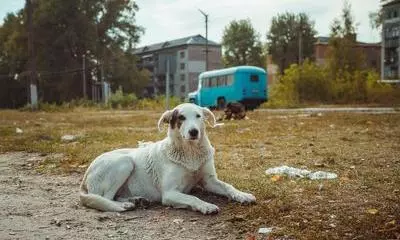
Chernobyl disaster altered the DNA of dogs in the area: study
text_fieldsSouth Carolina: Decades after the Chernobyl nuclear disaster, scientists have found that exposure to radiation altered the genes of wild dogs living near the exclusion zone. Generations of the canine population have experienced profound changes in their genetics since 1986.
The study published in Science Advances also says that the changes in genetics differ as per the exposure to different levels of radiation.
Tim Mousseau, a professor of biological sciences at the University of South Carolina, told ABC News that the wild dogs in the area are probably the descendants of pets that were abandoned at the time of the tragedy. Around 120,000 people were forced to leave in a hurry without their belongings. And at least some of them have left behind pets.
The dogs, however, have managed to establish a decent population after all these years. Around 800 semi-feral dogs are living near disaster-stricken spot including the highly contaminated Chernobyl New Safe Confinement structure. Workers and researchers in the region feed the dogs sometimes. Vets also occasionally visit them to update vaccines and address any medical problems.
While the incident greatly reduced the wildlife population due to radioactive contamination, some have survived and bred. The Chernobyl Dog Research Initiative has been providing care for the dog population in the exclusion zone. Researchers gathered and analysed blood samples from over 300 dogs between 2017 and 2019.
Scientists think the genetic changes are similar to the ones seen in atomic bomb survivors from Japan during World war II. This includes an increased rate of cataracts. The eyes are the first tissues to show signs of chronic exposure to ionising radiation. Dogs in the area are also interacting and breeding freely due to their extensive genetic variances, said Mousseau.
Scientists also found that the Chernobyl dogs contain 15 complex family structures that are unique compared to other dogs in the world.
Elaine Ostrander, the author of the study and geneticist at the NIH’s National Human Genome Research Institute, told IFLScience that we can see the history of those pets etched in the DNA of dogs living in the exclusion zone today. "I think the most remarkable thing about the study is that we identify populations of dogs living in and in the shadow of the reactor, and we can tell who those dogs are just by looking at their DNA profile. To think of families living in places like near spent fuel rods is incredible and speaks to the resilience of dogs as a species."
Experts are now interested in closely examining the genetic progression over generations. This will provide insights into the effects of highly radioactive environments on large mammals including humans.





